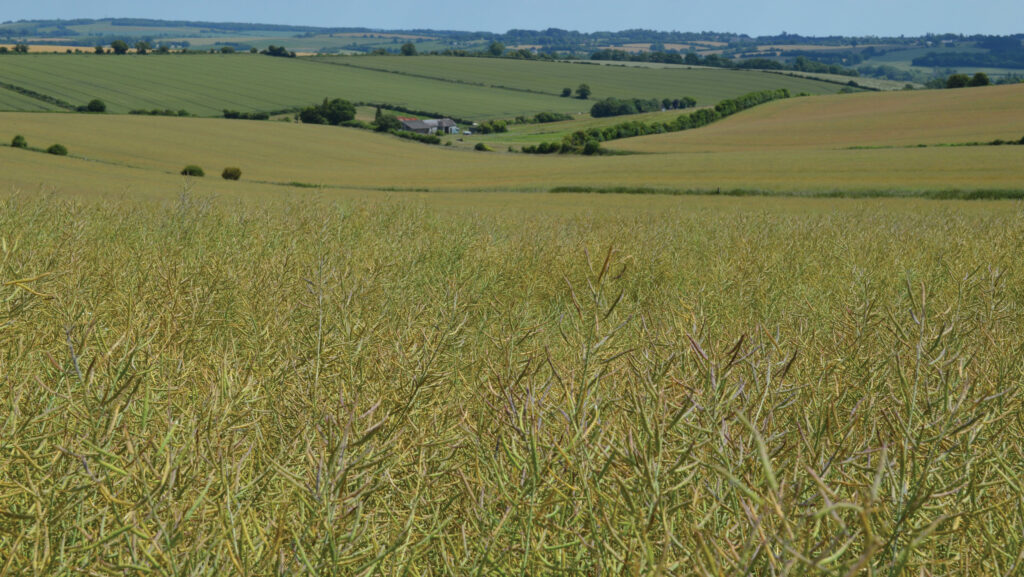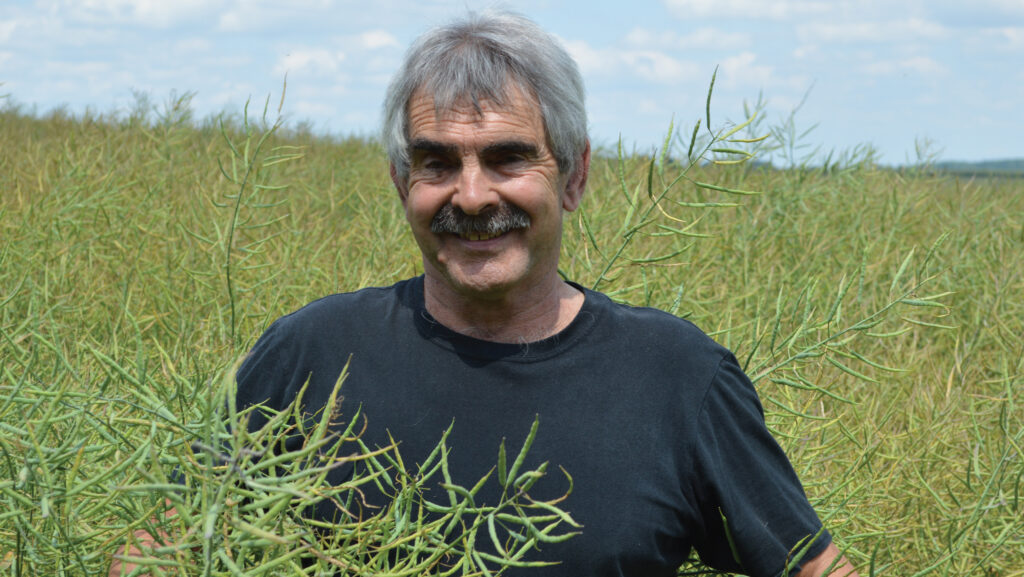Late-drilled oilseed rape escapes high flea beetle pressure
 © David Jones
© David Jones Hampshire oilseed rape grower David Northway is drilling his crop later than many in September and seeing yields touch 4t/ha with no crop failures from pest attacks in the past two years.
Direct-drilling in the first week of September with a companion crop has proved a success on the farm, as his oilseed rape escapes serious cabbage stem flea beetle attacks and the crop rivals milling wheat for profitability.
With the crop emerging in mid to late September, it misses the main flea beetle migration period, and for extra insurance it is protected by a companion crop of buckwheat.
“We have seen two years of success by direct-drilling and using a companion crop in early September, and we are happy again with this season’s crop,” he tells Farmers Weekly.
See also: Round-up of OSR varieties to drill in summer 2024
David, as the farm manager at Breamore Estate, is a long-term oilseed rape grower who has refined his establishment system by careful choice of drill and variety, and an increased focus on crop nutrition.
This season he is growing 106ha of rapeseed on light soils, which range from gravelly sands in the River Avon valley to chalky loams on the surrounding higher ground.
The estate sits between Fordingbridge and Salisbury on the northern edge of the New Forest and encompasses 550ha of arable cropping including milling winter wheat, spring and winter barley, with oilseed rape and poppy seed as break crops.
The farm is in its third year of using an Amazon Cirrus 6m direct disc drill with twin tanks for sowing oilseed rape and a companion crop of buckwheat. The drill limits soil movement to a bare minimum to maintain soil moisture at drilling time.
Oilseed rape usually follows winter wheat or spring barley on the farm, and straw from these crops is baled to try and limit slug damage to the following crop. The drill has minimum tillage discs on the front, but these have not been used.
Drilling date
With a limited workforce on the estate, oilseed rape has always been drilled after the cereal harvest is completed in late August.
David says this also fits in well with the control strategy for flea beetles.
“I would still be prepared to go drilling up to the end of September if needed, as in the south of England we are not up against early frosts or severe winter weather,” he says.
A specialist oilseed rape starter fertiliser is applied to the stubble just before drilling, providing nitrogen, phosphate and potash, and then the crop is drilled in the first week of September into a long cereal stubble of 250mm to deter flea beetles.
The later drilling often means there is more soil moisture for the seed to germinate and the plant to grow away strongly, rather than drilling earlier in drier conditions in August.
Variety
David has looked at a number of hybrid varieties to give him vigorous and quick emergence and strong early development.
Trials on the farm have shown the variety Excited from Bayer’s Dekalb range fits in well, as it shows good autumn and spring vigour.
With a large pheasant shoot on the estate, the variety has shown that it can recover strongly from heavy bird grazing, and now half his 106ha area is down to the variety.
He points out that one area last year looked as if it had disappeared completely due to heavy bird grazing, but it recovered strongly.
“We need a variety that is robust, and an early starter with the ability to recover,” he says.

David Northway © David Jones
David also favours the variety as it is not too tall, is consistent, and shows good nitrogen efficiency. His other 50% of oilseed rape is in fellow hybrids Murray and Antigua.
The crop is drilled at 50 seeds/sq m to aim for 30-35 plants/sq m by the spring, and is sown at the same time with 10kg/ha of buckwheat as a companion crop, which he has used for the past three seasons.
Weed control
The direct-drilled crops do not show as good weed control as when David used some cultivations before drilling, and hence three herbicides are used before Christmas along with slug pellets, and a fungicide and insecticide.
After the crop is rolled, a pre-emergence herbicide of Centium (clomazone) is used to control broad-leaved weeds, especially troublesome hedge mustard, a post-emergence spray of Fusilade (fluazifop) is applied for cereal volunteers, and then Kerb (propyzamide) for blackgrass and other grassweeds.
An application of Architect (pyraclostrobin + mepiquat chloride + prohexadione) is used in the autumn along with Cleancrop Corsair (Lambda cyhalothrin) insecticide for cabbage seed weevil larvae, while micronutrients boron and magnesium are also added.
For this season, he can claim £55/ha a year under the Sustainable Farming Incentive for using a companion crop, but the use of an autumn insecticide precludes the £45/ha a year for non-insecticide use under the same scheme.
In the spring, he uses Architect, along with boron and magnesium. He also applies seaweed extract Maerit at stem extension, and then Cleancrop Vulture (prothioconazole + tebuconazole) fungicide as a flowering spray along with more magnesium.
Less fertiliser
One of the advantages of using the variety Excited is that it has good nitrogen efficiency, so David has cut his overall nitrogen use down to 190kg/ha from 220kg/ha.
This includes 58kg/ha of coated urea in February and a further 104kg/ha that was planned to go on in March, but had to wait until mid-April for dry weather. The remaining nitrogen to make up the 190kg/ha total was in the seed-bed fertiliser.
“Because the variety is better at using nitrogen more efficiently, we are able to cut back. Also, the coated urea gives us slow release through the spring,” he says.
He believes yields could be plateauing at about 4t/ha on his light soil so cutting back on nitrogen makes sense and he is now focusing on the micronutrient side in terms of adding boron, magnesium and seaweed extract.
“We are teaching ourselves to establish and grow oilseed rape better,” he says.
With no crops lost to cabbage stem flea beetle attacks in two years, he feels he is making progress.
With oilseed rape priced at about £400/t, and an oil bonus on top of that pushing the price towards £450-£460/t, together with the rotational benefit for the following winter wheat crop then oilseed rape is a profitable crop for him.
This comes at a time when many other rapeseed growers have given up due to the twin onslaught of flea beetles and dry seed-bed conditions when drilling early.

